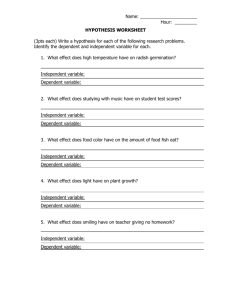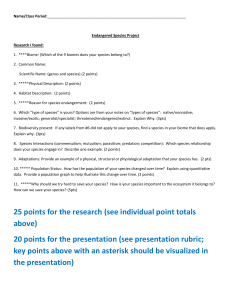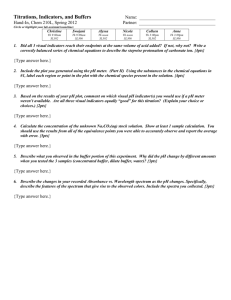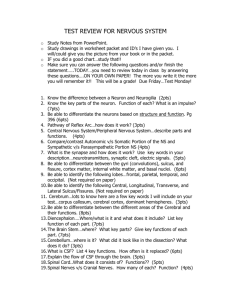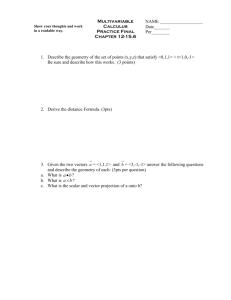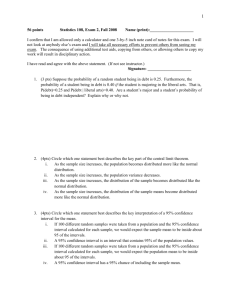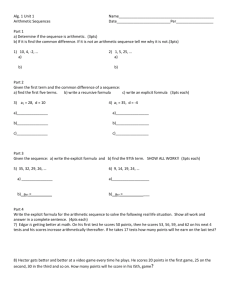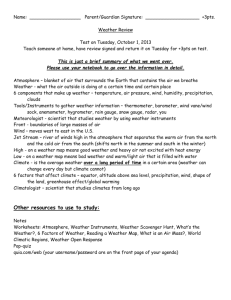Erosional and Depositional Study Guide
advertisement
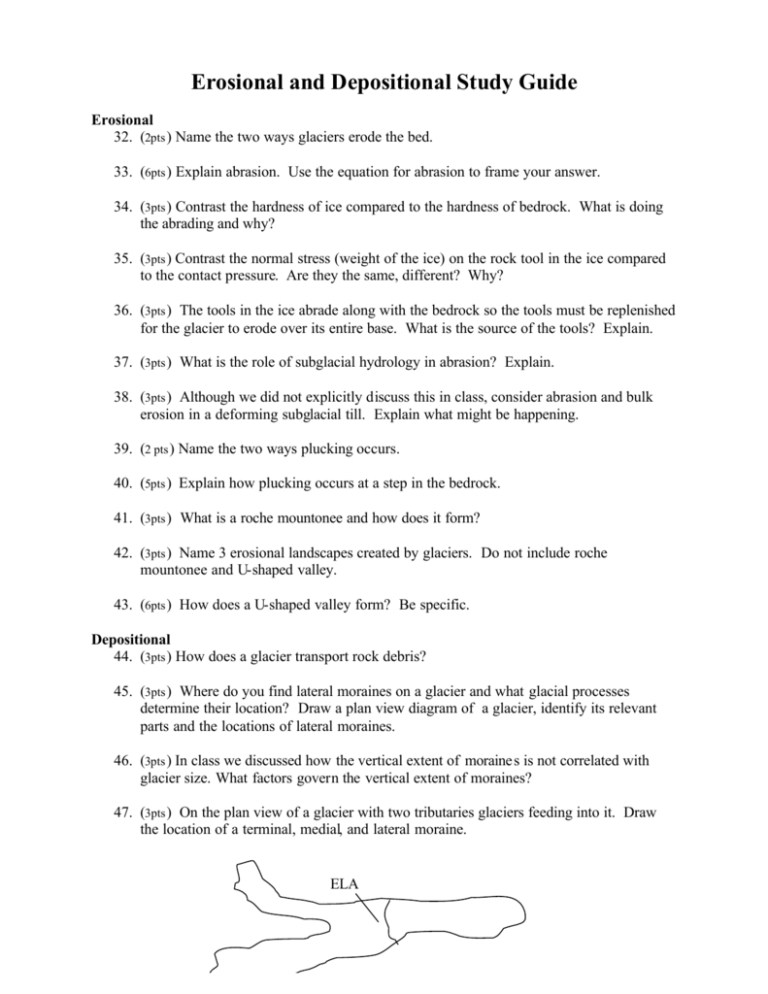
Erosional and Depositional Study Guide Erosional 32. (2pts ) Name the two ways glaciers erode the bed. 33. (6pts ) Explain abrasion. Use the equation for abrasion to frame your answer. 34. (3pts ) Contrast the hardness of ice compared to the hardness of bedrock. What is doing the abrading and why? 35. (3pts ) Contrast the normal stress (weight of the ice) on the rock tool in the ice compared to the contact pressure. Are they the same, different? Why? 36. (3pts ) The tools in the ice abrade along with the bedrock so the tools must be replenished for the glacier to erode over its entire base. What is the source of the tools? Explain. 37. (3pts ) What is the role of subglacial hydrology in abrasion? Explain. 38. (3pts ) Although we did not explicitly discuss this in class, consider abrasion and bulk erosion in a deforming subglacial till. Explain what might be happening. 39. (2 pts ) Name the two ways plucking occurs. 40. (5pts ) Explain how plucking occurs at a step in the bedrock. 41. (3pts ) What is a roche mountonee and how does it form? 42. (3pts ) Name 3 erosional landscapes created by glaciers. Do not include roche mountonee and U-shaped valley. 43. (6pts ) How does a U-shaped valley form? Be specific. Depositional 44. (3pts ) How does a glacier transport rock debris? 45. (3pts ) Where do you find lateral moraines on a glacier and what glacial processes determine their location? Draw a plan view diagram of a glacier, identify its relevant parts and the locations of lateral moraines. 46. (3pts ) In class we discussed how the vertical extent of moraine s is not correlated with glacier size. What factors govern the vertical extent of moraines? 47. (3pts ) On the plan view of a glacier with two tributaries glaciers feeding into it. Draw the location of a terminal, medial, and lateral moraine. ELA 48. (4pts) How can terminal moraines be used to infer past ELAs? (with previous positions of ELA, we can infer past climate). 49. (4pts ) What is the potential problem in using a set of terminal moraines from the same glacier to define the sequence of past climate changes? 50. (3pts ) Ground moraine. Define it and discuss the two possible component parts. How would you tell, stratigraphically, the difference between its component parts? 51. (4pts ) Ground moraine and outwash till (in the outwash plain) are related. Explain. How can you tell them apart? 52. (4pts ) Explain push moraines, interlobate moraines, and rogen moraines. 53. (4pts ) Describe a drumlin and its possible formation processes 54. (4pts ) How do drumlins differ from mega-scale glacial lineations? 55. (4pts ) From observations of stream flow we can observe how sediment is deposited and what stratigraphic structures are produced. In turn, from the sedimentary deposits we can infer what flow conditions occurred that deposited them. Briefly review the types of flow regimes that deposits sediment in an outwash plain. And generally speaking what kind of stratigraphic structures would you observe? 56. (4pts ) What are eskers and how are they formed? How can you identify an esker on the landscape? 57. (4pts ) Kames and kame terraces. Describe each and how they are formed. Periglacial 58. (2pts ) Define permafrost 59. (3pts ) What are some of the engineering problems associated with permafrost? Describe. 60. (3pts ) Describe patterned ground and the formation of ice wedges. 61. (3pts ) Rock glaciers. What are they and in what important ways do they differ from regular glaciers? Marine and Lacustrine environments 62. (3pts ) Compare and contrast morainal banks and terminal moraines. 63. (3pts ) Discuss how one would identify ice-rafted debris.
